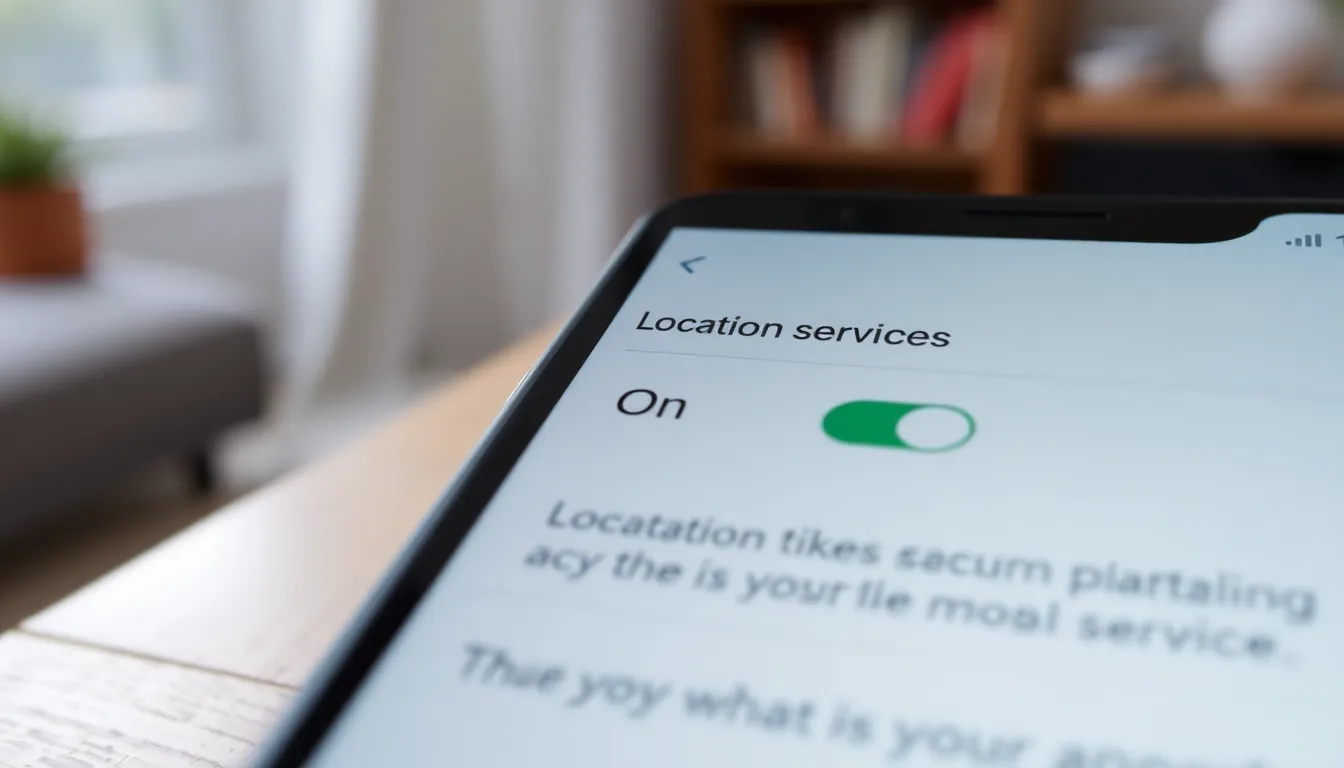Table of Contents
TogglePicture this: you’re on a road trip, cruising along with the wind in your hair, and your iPhone’s GPS suddenly decides it’s time to play hide and seek. Instead of guiding you to that trendy café, it’s leading you to the middle of nowhere. Frustrating, right?
Understanding GPS Accuracy Issues
GPS accuracy problems can arise from several factors that affect device performance. Identifying these causes helps pinpoint issues effectively.
Common Causes of Inaccurate GPS
GPS inaccuracies often stem from satellite signal disruptions. Buildings, trees, and other obstructions may hinder signals, leading to incorrect location readings. Software glitches can also impact performance. Outdated operating systems or apps introduce bugs that compromise accuracy. Moreover, user settings can play a role. Enabling location services only for specific applications might limit GPS functionality. Finally, interference from electronic devices may cause further inaccuracies. Keeping these potential causes in mind aids troubleshooting efforts.
Effects of Environmental Factors
Environmental elements significantly influence GPS performance. Urban areas often present challenges due to tall buildings and dense infrastructures. Signals bounce off structures, leading to multi-path errors. Dense foliage can create similar issues in rural areas. Natural obstructions limit line-of-sight access to satellites, affecting accuracy. Weather conditions, such as heavy rain or storms, might also disrupt signals. Atmospheric conditions introduce inaccuracies as well. High levels of ionospheric interference during solar activity can degrade GPS precision. Recognizing these environmental factors helps in understanding why the GPS might not function optimally.
Troubleshooting Steps

Addressing GPS accuracy issues involves a few simple steps. Following these can help identify and potentially resolve problems with an iPhone’s GPS function.
Checking Location Services Settings
Ensure Location Services is enabled on the device. Go to Settings, then Privacy, and select Location Services. Confirm that Location Services is toggled on. Apps requiring GPS access also need to be checked individually. Look for permissions given to each app and adjust them if necessary. Certain settings might restrict GPS accuracy, such as choosing “While Using the App” instead of “Always.” Verifying and adjusting these settings often resolves common GPS inaccuracies.
Restarting Your iPhone
Restarting the iPhone can refresh connections and reset minor software glitches. To restart, press and hold the power button until the slider appears. Sliding to power off gives the device a chance to reset completely. Once turned off, wait for about 30 seconds before powering it back on. This quick refresh often improves GPS performance. Sometimes, a simple restart is all it takes to fix various technical issues.
Updating iOS Software
Keeping the iOS software updated is crucial for maintaining GPS accuracy. Navigate to Settings, then General, and click on Software Update. Any available updates highlight improvements and bug fixes that enhance the performance of GPS features. Installing the latest version often resolves ongoing mapping inaccuracies. Regularly checking for and installing updates can prevent further GPS-related problems. It’s essential to stay current with software to ensure the device functions optimally.
Alternative Solutions
Exploring alternative solutions can enhance GPS accuracy on the iPhone. Users often find success with various methods.
Using Third-Party GPS Apps
Third-party GPS apps often provide enhanced mapping features and user interfaces. Examples include Google Maps and Waze, which can deliver more accurate location data than the native Maps app. Many users report that these apps offer real-time updates and community-driven insights, aiding navigation. Customizable settings within these apps allow for specific routing preferences, further improving the user experience. Downloading and trying different apps can reveal which one meets individual needs best.
Hardware Considerations
Hardware elements can significantly impact GPS performance. Users should ensure their iPhone antenna isn’t obstructed by a case or any physical damage. An unobstructed line of sight to satellites enhances accuracy, so removing cases when outdoors can help. Regularly cleaning iPhone ports and speakers prevents potential malfunctions from debris. Checking for hardware issues with Apple support can also pinpoint and resolve underlying problems affecting GPS reliability. Addressing these hardware aspects may lead to better navigation experiences.
User Experiences
Users frequently share their frustrations about GPS inconsistencies with iPhones. Many note that sudden location shifts occur without warning, often leading to unexpected detours. Reports typically highlight situations where the phone insists on navigating the driver through longer routes. Locations may suddenly disappear or appear inaccurately on maps, causing confusion during travel. Users also express concern regarding how dense urban areas seem to amplify GPS inaccuracies.
Common Complaints
Complaints about iPhone GPS often revolve around erratic behavior. Many users experience significant delays when locating their positions. Users frequently report dropped signals while navigating through familiar areas. The accuracy can significantly decline when moving at higher speeds, resulting in mismatched directions. Other complaints mention issues with specific apps failing to display current locations, creating uncertainty. Such problems prompt users to vent their frustration on various forums, seeking solutions.
Success Stories
Success stories reveal how users found effective solutions to GPS issues. Some share that checking and adjusting Location Services settings led to noticeable improvements. A few individuals report opting for third-party apps like Google Maps and Waze, which enhanced their navigation experiences. Users frequently mention that regular software updates play a crucial role in boosting accuracy. Many discovered that keeping iOS up to date eliminates bugs that hinder performance. Positive feedback accumulates as users emphasize the importance of clearing obstructions near the phone’s antenna for optimal results.
Addressing GPS accuracy issues on an iPhone is crucial for a smooth navigation experience. By understanding the factors that contribute to inaccuracies users can take proactive steps to enhance performance. Checking Location Services settings and keeping the device updated are essential first steps.
Exploring third-party GPS apps can also provide additional benefits for those seeking more reliable navigation options. With a bit of troubleshooting and awareness of environmental factors users can significantly improve their iPhone’s GPS functionality, leading to more accurate and efficient journeys.




